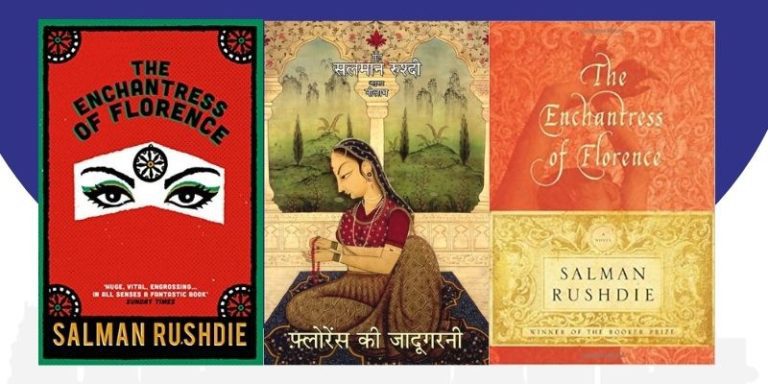Indu Sudaresan’s historical fiction book, The Twentieth Wife, captures the drama of the lives of the Mughal kings and queens.
Erudite, beautiful, and fiercely brilliant, Mughal Empress Nur Jahan has been the subject of interest for many historians in general and feminist scholars in particular. The sheer extent of her legacy is awe-inspiring, from grand monuments and unique forms of embroidery to memorialisation in currency and art.
Yet, in contemporary media and culture, it seems much of Nur’s life and achievements have been eclipsed almost entirely by either the succeeding Shahjahani records (which almost always replace Nur with Mumtaz Mahal as the face of the ideal romantic Mughal heroine) or by quasi-historical narratives which aim to paint her as a manipulative and power-hungry woman who exploited her husband’s drunkenness to retain her hold over the empire. In the vein of figures like Catherine the Great or Anne Boleyn, the image of Mughal India’s most powerful female sovereign has remained a topic of contention over the years.
The Twentieth Wife, written by Indu Sundaresan, is perhaps a response to this very contention. The first of The Taj Mahal Trilogy, this book, a fictionalised biography, attempts to humanise Nur by tracing her tumultuous, remarkable life: birth to childhood, courtship, misery, marriage and eventually, her rise to power as Jahangir’s twentieth wife, and the most beloved of them all.
We encourage you to buy books from a local bookstore. If that is not possible, please use the links on the page and support us. Thank you.
Portrait of 17th-Century India
The novel opens with the scene of Nur’s birth, in the desert of Qandahar. Destitute and on the run following Shah Tamasp’s death, Persian courtier Ghias Beg and his wife Asmat Begum reluctantly decide to abandon their newborn child, whom they lovingly name Mehrunissa (the Sun Among Women) after they realise their impoverishment would keep them from giving their daughter a kind life. Yet when circumstances bring her back to her parents, along with an unexpected turn of fortunes, Ghias realises that destiny and divinity are aligned to protect Mehrunissa: “Allah does want us to keep this child.”
Most of the first half of the novel is devoted to Mehrunissa’s time in Lahore; her devotion to her parents, her easy relationship with her siblings, her first glimpse of the young prince Salim (Jahangir), their subsequent mutual infatuation and her strange bond with the formidable matriarch Ruqayya, Akbar’s Padshah Begum. Sundaresan skilfully mixes history with a fairytale-esque style of storytelling to create an immersive portrait of 17th-century India. The novel is at its strongest when it lingers on the tactile, aesthetic aspects of everyday life: vibrant bazaars, sumptuous descriptions of food, women making rangoli patterns in a courtyard, the ornate jewellery and embroidered clothes worn by the characters, and of course the opulence of Akbar’s courts. Lush imagery helps keep the story afloat in some slower stretches, for example, the earlier scenes of Mehrunissa and Salim’s courtship which could very easily teeter into the purple-prose territory and maudlin rhapsodies. The author is to be commended for the amount of research that has gone into her world-building.
However, the story struggles once the conflict begins to pick up, following the abrupt cessation of Mehrunissa’s relationship with the crown prince, due to her political marriage with officer Ali Quli. Most of the chapters alternate between Mehrunissa’s miserable, often abusive marriage and Salim’s continual attempts to rebel against the ageing Akbar. Eventually, this tone of misery and resentment feels tedious, especially because, for the protagonist, Mehrunissa’s arc is rather slow-moving and unremarkable. The ending, while imminent, feels slightly unearned after such an uneven pacing.
Authorial Biases: The Sun Among Women?
While reading the novel, I tried to analyse what exactly it was that I didn’t quite enjoy, more so because Nur Jahan happens to be my favourite historical figure. That is when I realised: for a novel centred on a feminist icon, The Twentieth Wife does not do a very good job of writing nuanced female characters. The primary example of this is, of course, Sundaresan’s rendition of Nur Jahan/Mehrunissa herself. Hers would be the perfect storyline for a commentary on the lives of women in the Mughal era, even women from established and reputable families, relegated simply to bearing heirs and forbidden from participating in administration and jurisdiction. Yet, the narrative remains stubbornly centred on only her woes, and more seriously, refuses to give her any flaws or noticeable character development. Feminist retellings do not entail whitewashing the humane traits; but this version of Mehrunissa feels more like a projection, tailored for sympathy only, than a three-dimensional, morally ambiguous woman.
There is also a very evident authorial bias towards the titular heroine, at the expense of other female characters. Repeatedly emphasizing that Mehrunissa is virtuous, good and beautiful- Sundaresan immediately demonises any woman who even remotely opposes her heroine. I found the portrayal of Jagat Gosini rather off-putting, like a soap opera villain. From the get-go, it is almost hammered in that she is Mehrunissa’s rival, but in the absence of any moral ambiguity, both women end up feeling like caricatures, similar to the divisive historical portrayals in Philippa Gregory’s books.
There is also a deliberate suspension of disbelief as to why this idealised heroine would love Jahangir, who gets a far more unfavourable treatment in the novel. Sullen, selfish, and manipulative, his portrayal seems to be a perpetuation rather than a subversion of the stereotypes Sundaresan sought to avoid. The impression their romance left on me was lacklustre and I could not care less about their union.
Conclusion
The Twentieth Wife is recommended for those who like decorative prose and royal intrigue, with a touch of sentimental romance, but not for those who seek complex female characters and prefer showing over telling.
Best Quotes on the Mughal queen
“She wanted to do this for the man she loved so deeply, because this is what she wanted. And, Nur Jahan thought- already at ease with her new title- she wanted to be the force to reckon with behind the throne. She wanted to be the power behind the veil.”





















